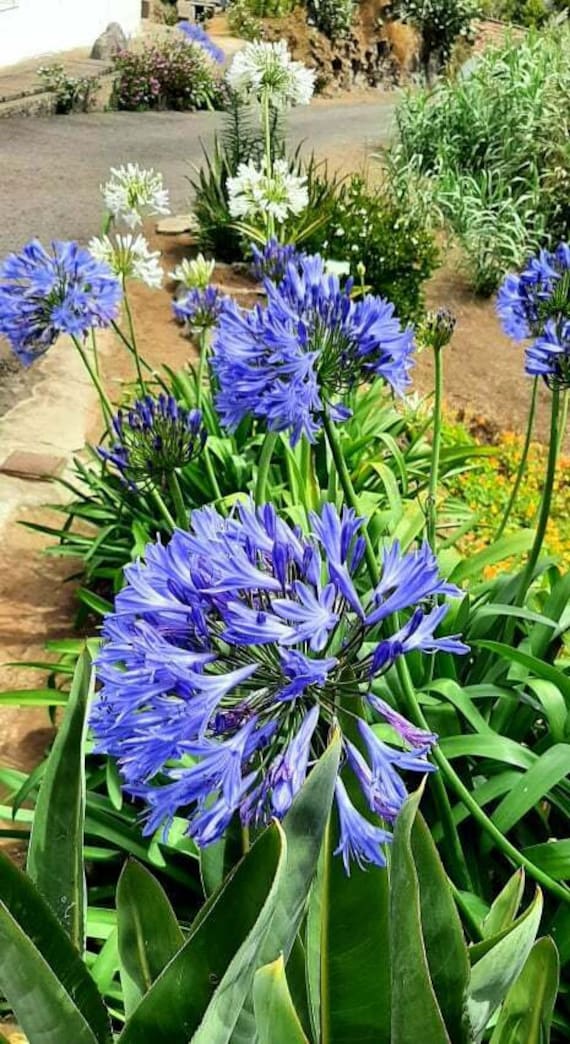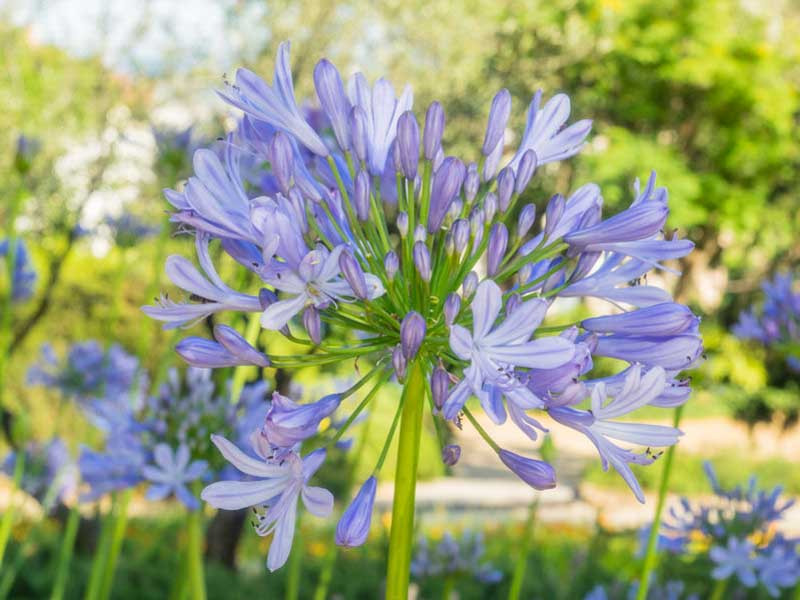Agapanthus Varieties: Picking the very best for Your Landscape
Agapanthus Varieties: Picking the very best for Your Landscape
Blog Article
Understanding the Art of Agapanthus Care: Crucial Steps for Healthy And Balanced Development and Vibrant Flowers
In the realm of horticulture, the farming of agapanthus stands as a fulfilling undertaking for those that look for to nurture these classy blooming plants. With their striking blossoms and elegant vegetation, agapanthus has recorded the interest of gardeners worldwide. However, accomplishing optimum development and vivid blooms needs a nuanced approach that incorporates numerous essential steps. From selecting the right selection to understanding pruning methods, the trip towards growing prospering agapanthus plants is complex and holds the vital to unlocking the full possibility of these organic gems.

Picking the Right Agapanthus Variety

When choosing the ideal Agapanthus range for your garden, consider aspects such as environment suitability, flower color, and development practice. Agapanthus, generally known as Lily of the Nile or African lily, comes in a selection of shades ranging from tones of purple and blue to white. Select a bloom color that enhances your existing yard combination to create an unified landscape. Additionally, take into consideration the environment in your region to ensure the Agapanthus variety you pick can prosper in your specific conditions. Some varieties are a lot more tolerant of cool temperatures, while others favor warmer climates. Recognizing the development practice of different Agapanthus selections is critical for appropriate positioning within your garden. Some ranges have a clumping growth habit, ideal for borders or containers, while others have a more spreading nature, appropriate for ground cover or mass plantings. By carefully assessing these elements, you can select the excellent Agapanthus range to improve the beauty of your yard.
Ideal Planting Conditions
Thinking about the optimum ecological needs is essential for effective Agapanthus cultivation. Agapanthus plants are sensitive to cool temperatures and ought to be protected from frost throughout winter season months.
To make sure healthy and balanced growth and vibrant flowers, plant Agapanthus bulbs at a deepness of about 2-4 inches and room them 8-12 inches apart. Mulching around the base of the plants assists preserve wetness and subdues weed growth.
Watering and Fertilizing Tips
Preserving correct wetness degrees and offering vital nutrients are vital aspects in the care routine for Agapanthus plants. When it involves watering Agapanthus, it is essential to strike a balance. If overwatered, these plants choose continually moist soil but are prone to root rot. Throughout the growing period, water deeply when a week, making certain the soil is well-draining to avoid waterlogging. In hotter climates or during periods of drought, even more frequent watering may be essential to keep the soil uniformly wet. However, lower watering in the wintertime to avoid water logged problems.
Fertilizing Agapanthus is essential for promoting healthy growth and respected flowers. Use a well balanced fertilizer, such as a 10-10-10 formula, in the very early spring as brand-new development arises. By complying with these watering and feeding ideas, you can guarantee your Agapanthus plants prosper and produce vibrant, long-lasting blooms.
Trimming Methods for Agapanthus
Pruning Agapanthus plants at the appropriate times and with appropriate techniques is critical for preserving their health and wellness and promoting ideal development and blooming. The perfect time to prune Agapanthus is in late winter season or very early springtime prior to brand-new development emerges. Beginning by eliminating any type of dead or yellowing fallen leaves near the base of the plant. Cut them as short as possible without harming the emerging shoots.
For flowered stems, wait up until the flowers have actually withered and after that trim them back to the base. This helpful hints not only cleans up the plant's appearance however likewise encourages the growth of brand-new blossom buds. Deadheading spent blossoms can additionally reroute the plant's energy into producing more blooms as opposed to here are the findings establishing seeds. Nonetheless, if you intend to gather seeds for proliferation, leave some flowers to mature and completely dry on the plant.
Remember to utilize clean, sharp devices to make precise cuts and reduce the danger of introducing diseases. Agapanthus. Regular trimming will help maintain your Agapanthus looking healthy and neat while making sure an abundant display of beautiful flowers
Dealing With Usual Bugs and Illness
After making sure appropriate trimming strategies for Agapanthus, it is vital to deal with common parasites and illness that can influence the health and vitality of these plants. Agapanthus plants are normally hardy yet can still succumb to particular concerns. One common parasite that affects Agapanthus is the Agapanthus gall midget. This small, orange fly lays its eggs in the foliage, bring about altered development and flower buds that fall short to open up. To battle this bug, trim and destroy any kind of affected plant components and consider utilizing insecticidal soap.
One more usual problem is fungal leaf area, which provides as dark lesions on the fallen leaves. To stop fungal conditions, guarantee excellent air circulation around the plants, stay clear of overhanging watering, and eliminate any kind of contaminated fallen leaves without delay. Additionally, Agapanthus plants can deal with origin rot if they are grown in improperly draining dirt. To avoid this, plant Agapanthus in well-draining dirt and stay clear of overwatering. By being cautious and taking punctual activity against conditions and bugs, you can assist your Agapanthus plants prosper and generate vibrant blooms.

Verdict
To conclude, understanding the art of agapanthus care entails selecting the right variety, supplying suitable growing problems, proper watering and fertilizing, appropriate trimming methods, and resolving common bugs and conditions. By following these important actions, you can guarantee healthy and balanced growth and dynamic flowers for your agapanthus plants. Remember to frequently monitor and other preserve your plants to promote their overall well-being and long life.
To ensure healthy growth and lively blooms, plant Agapanthus bulbs at a depth of about 2-4 inches and area them 8-12 inches apart. By following these watering and fertilizing tips, you can ensure your Agapanthus plants thrive and create vivid, durable blooms.
One typical insect that impacts Agapanthus is the Agapanthus gall midget. In addition, Agapanthus plants can endure from origin rot if they are grown in inadequately draining pipes soil. By following these essential steps, you can guarantee healthy and balanced development and vibrant blooms for your agapanthus plants.
Report this page